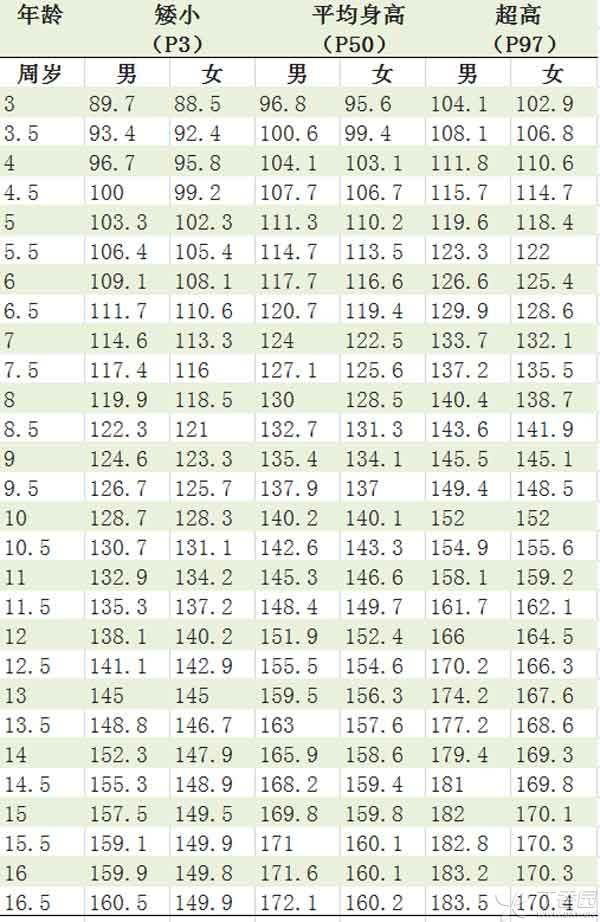
Society now seems to have entered an era of [high obsession]. In the distant Brazilian rainforest, aborigines associate height with wealth, power and fertility. In modern society, tall people have either explicit or implicit advantages in choosing a spouse, applying for a job or even electing. Even what people often say about [Gao Fushuai] puts [height] first, which shows how prominent height is.
It is difficult to change their height, so parents have to put the expectation of growing tall on their children. In recent years, more and more children have seen doctors for height problems, which is also a microcosm of fierce competition. However, we have noticed in clinical work that many parents’ understanding of height is one-sided or even wrong.
So, what are the misunderstandings of parents about height?
Myth 1: Stretching Exercise Promotes High
Exercise is crucial to the promotion of height. Some studies have shown that children who exercise regularly have a final height of 2 ~ 3 cm higher than children who do not exercise.
However, in daily life, there are always parents who think that stretching exercises such as horizontal bar are the most helpful for height growth. In order to cater to this mentality, some businesses have invented various stretchers and stretching beds.
In fact, this kind of stretching exercise and auxiliary equipment can only temporarily increase the joint cavity space of the large joints of the body, and can be recovered after rest, which is not beneficial to the final height growth of the child.
From the physiological point of view, the promotion of exercise to height is mainly played by stimulating the division and proliferation of epiphyseal plate chondrocytes, promoting the secretion of growth hormone and promoting bone calcium and phosphorus metabolism.
Rope skipping, basketball throwing, pull-up, swimming, brisk walking, etc. are all of great benefit to height growth. Children should be encouraged to stick to these sports for at least half an hour every day.
Myth 2: If the child is too short, he must be ill.
Parents who are not satisfied with their children’s height or worry about their children’s low growth are everywhere in outpatient clinics, but the proportion of children who really meet [short] and need medical intervention is not high. Most of them are parents who are eager for height and think their children are too short.
How to judge whether a child is short? Clinically, we often use [2005 Chinese children’s height percentile standard value (cm)] to judge.

The reference value of [dwarfism] in the table comes from the height statistics of children of the same age and sex in our country. Below this reference value, it means that children are in the shortest 3% (P3) of the same age and sex, which means that they can be diagnosed as [dwarfism].
For example, a nine-year-old girl, 120 cm tall, compared with this table, we found that 123.3 cm below the short reference line must go to the hospital for growth and development or endocrinology department.
Therefore, if the child’s height is higher than the short reference value and there are no other diseases, don’t worry too much, just pay attention to diet, exercise and sleep.
If you are not ill, you must find out the disease. If you waste time and money, it is also a blow to your child’s self-esteem and is not conducive to your child’s growth.
Myth 3: It’s just a long time. Wait a little longer.
Contrary to the second point, some parents disagree with their children’s short stature, believing that it is only [growing up late]. Just wait and imagine that their children will have a [fierce growth] in the future.
Although many children do grow up late, the doctor should judge whether they grow up late, otherwise it is likely to delay the golden period of promoting children’s growth. The earlier the correct treatment for short stature starts, the better the effect.
Studies have shown that even if the short stature caused by growth hormone deficiency is treated with growth hormone before the age of three, the height of adults is almost the same as that of normal people.
However, it is regrettable that very few children can start treatment at the age of 3-4. The reality is that these children often wait until puberty to seek treatment, and the treatment effect at this time is far less than before.
Therefore, when it is found that the child is short, or before the child is 3 years old to the peak of growth (boys are about 12 years old and girls are about 10 years old), the annual height growth is less than 4 cm, there is a possibility that the growth is too slow, and you should see a doctor. Parents must not neglect and delay the prime time for children’s treatment.
Myth 4: Increasing Drugs Have Great Benefits,
Like all kinds of diseases, there are many food supplements for height growth. Parents who blindly believe in them abound. All kinds of height-increasing drugs, supplements, big fish and big meat have been launched one after another. Even some so-called [secret recipe for height growth] are regarded by some parents as a treasure book for child care.
The child has been tossed about by his parents for several years. Instead of growing taller, he has been fed with problems such as precocious puberty and unbalanced nutrition intake. When he goes to a regular hospital at this time, he often regrets to find that it is difficult for the child to grow taller because he takes drugs indiscriminately and misses the best treatment time.
These high-rise products often imply commercial traps. In fact, there is no “high-rise” item in the health food functions approved by the Ministry of Health. Those health products under the banner of high-rise are all bragging. Although their deception methods have been exposed by the media over and over again, some people are still being cheated.
As for those [folk secret recipes] that grow taller, some may be mixed with sex hormones, which can significantly promote the growth of height in the short term, but at the same time accelerate the closure of epiphysis. Once the epiphysis is closed, it is difficult to have the chance to grow taller, which eventually limits the growth of children.
Therefore, parents must not blindly believe in these heightening drugs and health care products. A balanced and healthy diet, a balanced intake ratio of meat, fruits and vegetables and drinking water, and active exercise and adequate sleep are the right ways to grow taller.
Responsible Editor: Jing Liu
